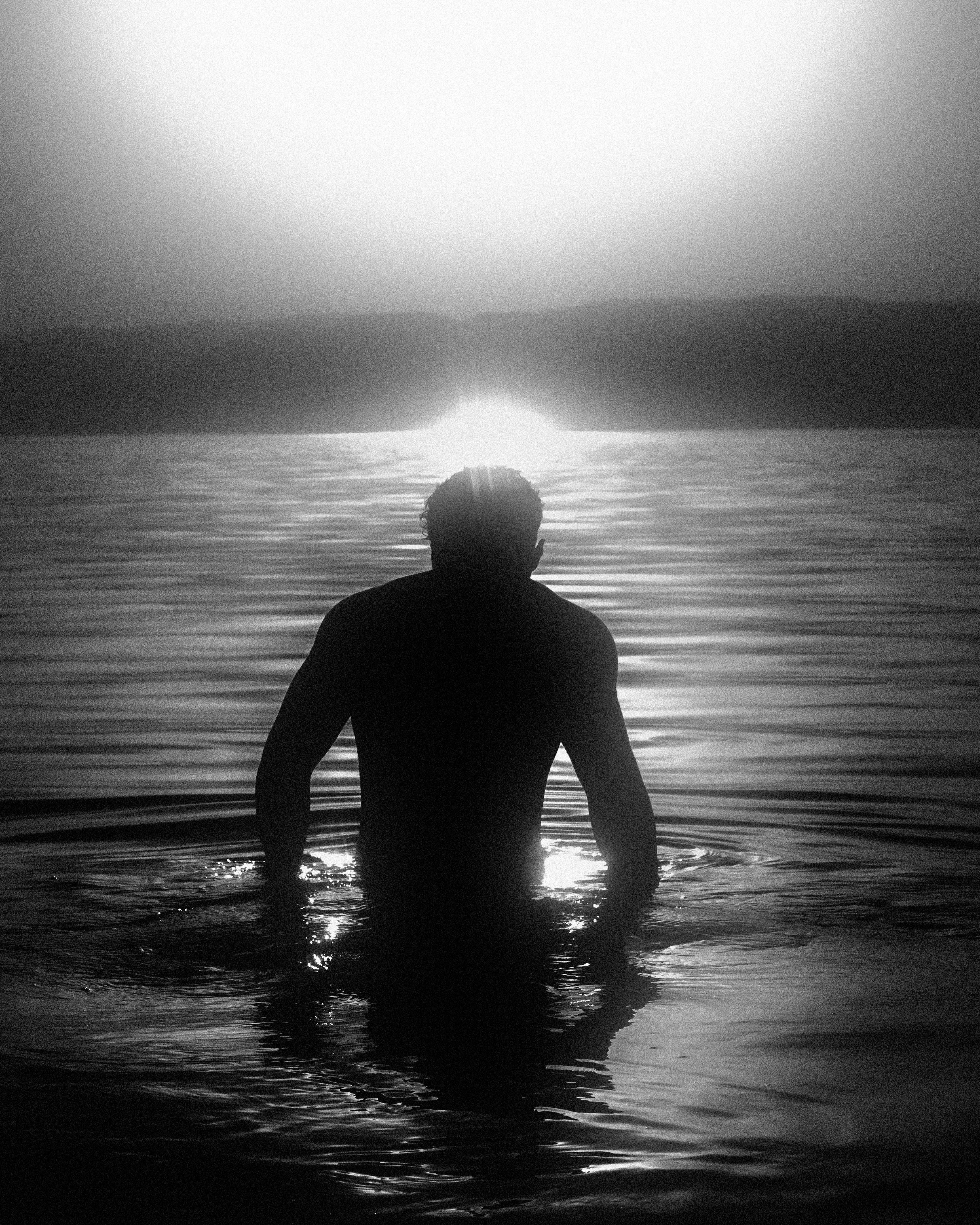
In the world of water sports, there is a topic that cannot be overlooked: water safety for paddlers. Whether you’re navigating the serene waters of a lake or braving the thrilling rapids of a river, it is crucial to prioritize safety at all times. However, there is one looming concern that stands out as the leading cause of death for paddlers in small crafts such as canoes, kayaks, and rafts. In this article, we will explore and delve into this important issue, equipping you with the knowledge and understanding you need to stay safe on your paddling adventures. So grab your life jacket and let’s dive in!
Understanding Water Safety for Paddlers
Importance of Water Safety Education
Water safety education is of utmost importance for paddlers. Whether you are a beginner or an experienced paddler, understanding the risks and hazards associated with water activities can greatly enhance your safety on the water. By educating yourself about water safety, you can prevent accidents and avoid potentially life-threatening situations.
Common Water Hazards
Being aware of common water hazards is crucial for paddlers. Some of the most common hazards include river currents and whitewater rapids, underwater obstacles and strainers, unpredictable weather conditions, and limited visibility due to fog or darkness. Understanding these hazards can help you anticipate and overcome challenges that may arise during paddling trips.
Safety Equipment for Paddlers
Equipping yourself with the necessary safety gear is a fundamental part of water safety for paddlers. Some essential equipment includes life jackets or personal flotation devices (PFDs), helmets for head protection, throw bags for rescue situations, whistles for communication, and other devices that can enhance your safety on the water. By having the right safety equipment, you can minimize the risks associated with paddling and increase your chances of a safe and enjoyable experience.
Leading Causes of Death for Paddlers
Drowning Incidents
Drowning incidents are one of the leading causes of death for paddlers in small crafts such as canoes, kayaks, and rafts. It is essential to understand the various factors that contribute to these incidents in order to prevent them effectively.
Capsize and Submersion accidents
Capsize and submersion accidents can occur when a paddler’s craft overturns or fills with water, causing them to become trapped or submerged. These accidents can be particularly dangerous if a paddler is not wearing a PFD or does not have proper training in self-rescue techniques. It is vital to take precautions and know how to respond in the event of a capsize to minimize the risks.
Inadequate Buoyancy and Flotation
Inadequate buoyancy and flotation can lead to serious accidents and even fatalities for paddlers. Insufficient buoyancy can cause a craft to sink, trapping the paddler underwater. By ensuring your craft is properly outfitted with the necessary flotation devices, such as airbags or foam blocks, you can significantly improve your safety in the water.
Collisions and Striking Hazards
Collisions with other watercraft or striking hazards, such as rocks or submerged objects, pose significant risks for paddlers. The impact of a collision can cause injuries or even lead to fatalities. It is crucial to maintain situational awareness, follow navigational rules, and avoid areas with potential striking hazards to minimize the likelihood of accidents.
Hypothermia and Cold Water Immersion
Hypothermia and cold water immersion are potential dangers for paddlers, especially in colder climates or during colder seasons. Prolonged exposure to cold water can lower body temperature rapidly, leading to hypothermia. It is essential to understand the symptoms of hypothermia and take precautions to prevent it, such as wearing appropriate protective gear and avoiding prolonged exposure to cold water.

Drowning Incidents
Statistics on Paddler Drownings
Research shows that drowning incidents are a significant concern for paddlers. According to studies, a considerable percentage of water-related deaths among paddlers occur due to drowning. Understanding the statistics related to paddler drownings can help raise awareness and promote water safety education among paddling communities.
Contributing Factors to Drowning
Several factors contribute to paddler drownings. Lack of proper safety education and knowledge about water hazards, failure to wear a PFD, inadequate self-rescue skills, and underestimating the power of water currents are some common factors. It is crucial for paddlers to be aware of these factors and take steps to mitigate them, thereby reducing the risk of drowning incidents.
Preventing Drowning Incidents
To prevent drowning incidents while paddling, it is important to prioritize water safety. Ensure that you are equipped with the necessary safety gear, such as a properly fitting PFD. Regularly participate in water safety training programs to enhance your knowledge and skills. Be cautious of river currents and always assess them before entering the water. By practicing proactive safety measures, you can significantly reduce the chances of drowning incidents.
Capsize and Submersion Accidents
Causes of Capsizing
Capsizing can occur due to various reasons, including improper weight distribution, sudden shifts in weight, rough waters or waves, or misjudgment of navigational obstacles. Understanding the causes of capsizing can help paddlers take preventive measures and make informed decisions while on the water.
Preventing Capsizing and Submersion
Preventing capsizing and submersion accidents starts with proper training and practice. Learning and implementing effective paddling techniques, understanding the limitations of your craft, and knowing how to maneuver in different water conditions are essential. Additionally, maintaining a good balance, avoiding sudden weight shifts, and being mindful of potential hazards can significantly reduce the risk of capsizing.
Self-Rescue Techniques
Knowing self-rescue techniques is crucial in case of a capsize or submersion accident. Techniques such as the Eskimo roll for kayakers or the re-entry and roll for canoeists can help you regain control of your craft and prevent dangerous situations. Attend self-rescue training programs or seek guidance from experienced paddlers to learn these valuable techniques and improve your ability to handle emergencies.

Inadequate Buoyancy and Flotation
Importance of Proper Buoyancy
Proper buoyancy is essential for paddlers to stay afloat and maintain control of their craft. Without adequate buoyancy, a capsized or swamped craft can become an extremely hazardous situation. By ensuring that your craft has the necessary buoyancy, whether through airbags, foam blocks, or other flotation devices, you can increase your safety on the water.
Types of Floatation Devices
There are various types of flotation devices available for paddlers, including inflatable airbags, foam blocks, and buoyancy aids. Each type has its advantages and limitations, so it is important to choose the appropriate device for your specific craft and paddling environment. Consult with experts or experienced paddlers to determine the best fit for your needs.
Properly Outfitting Your Craft
Properly outfitting your craft is crucial for maintaining buoyancy and flotation. Install flotation devices according to the manufacturer’s instructions and ensure that they are securely attached. Regularly inspect and maintain your craft’s flotation devices to ensure their effectiveness. By taking the time to outfit your craft correctly, you are investing in your own safety and reducing the risk of accidents.
Collisions and Striking Hazards
Types of Collisions and Hazards
Collisions with other watercraft or striking hazards pose significant dangers for paddlers. Common types of collisions include collisions with motorized boats, collisions between kayaks/canoes, and collisions with stationary objects. Hazards can include rocks, submerged trees or logs, bridge pillars, and other obstacles that can cause severe injuries or damage to your craft.
Avoiding Collisions and Striking Hazards
To avoid collisions and striking hazards, maintain constant vigilance and situational awareness while on the water. Follow navigational rules and regulations, yield to larger vessels, and give appropriate signals to indicate your intentions. Avoid areas known for hazards and always leave a safe distance between yourself and potentially dangerous objects. By being proactive and alert, you can greatly minimize the risk of collisions and striking hazards.
Situational Awareness
Developing and maintaining situational awareness is crucial for paddlers. Continuously monitor your surroundings, keep an eye out for other watercraft, and be aware of potential obstacles in the water. Assess the current and future conditions that may affect your safety, such as changing weather patterns or river flow. By staying alert and well-informed, you can make informed decisions to ensure your safety while paddling.

Hypothermia and Cold Water Immersion
Understanding Hypothermia
Hypothermia occurs when the body loses heat faster than it can produce, leading to a rapid drop in body temperature. It is a serious condition that can be life-threatening if not managed promptly. Paddlers are particularly at risk of hypothermia, especially when exposed to cold water for extended periods. Understanding the signs and symptoms of hypothermia is essential for early detection and treatment.
Cold Water Immersion Risks
Cold water immersion poses numerous risks for paddlers. Even in relatively mild temperatures, the body loses heat much faster in water than in air. Cold water can quickly lead to hypothermia, impairing judgment, physical abilities, and increasing the likelihood of accidents. It is crucial to take precautions when paddling in cold water and wear appropriate protective gear to minimize the risks associated with cold water immersion.
Preventing Hypothermia
Preventing hypothermia starts with proper preparation and wearing suitable protective gear. Dress in layers, including moisture-wicking and insulating materials. Always wear a PFD, as it not only provides buoyancy but also acts as insulation in cold water. Avoid paddling alone and inform others of your itinerary to ensure that help can be summoned promptly if needed. By taking these precautions, you can reduce the risk of hypothermia and enjoy a safer paddling experience.
Safety Equipment for Paddlers
Life Jackets and Personal Flotation Devices (PFDs)
Life jackets and PFDs are critical pieces of safety equipment for paddlers. They provide buoyancy and keep you afloat in case of an accident or capsizing. Ensure that your PFD is of the appropriate size, fits snugly, and is Coast Guard-approved. Regularly inspect your PFD for any damage or wear and replace it if necessary. Wearing a PFD at all times while on the water can save your life.
Helmets and Head Protection
Head protection, such as helmets, is especially important for paddlers engaging in whitewater activities. Helmets provide protection against potential head injuries caused by collisions with rocks, logs, or other objects. Make sure your helmet fits properly and is designed for water sports activities. Always prioritize your safety and wear a helmet when paddling in challenging or potentially hazardous environments.
Throw Bags, Whistles, and Communication Devices
Throw bags, whistles, and communication devices are valuable tools for paddlers in emergency situations. Throw bags can be used to rescue someone in the water, while whistles can alert others to your location or call for help. Communication devices, such as waterproof radios or cellular phones in waterproof cases, can help you contact emergency services in case of emergencies. Carry these items with you on every paddling trip to enhance your safety and preparedness.
Importance of Water Safety Education
Effective Water Safety Training Programs
Participating in effective water safety training programs is vital for all paddlers. These programs provide valuable knowledge and skills that can save lives. Look for programs offered by reputable organizations and instructors with experience in paddling and water safety. Topics covered in these programs typically include hazard recognition, self-rescue techniques, emergency response, and navigational rules. By investing time and effort in water safety education, you are equipping yourself with the necessary tools to stay safe on the water.
Paddler Safety Certification
Obtaining a paddler safety certification demonstrates your commitment to water safety and proficiency in paddling skills. Certification courses typically include theoretical knowledge assessments and practical skill evaluations. These certifications not only enhance your own safety but also serve as a testament to your competence as a paddler, building trust within the paddling community. Consider pursuing paddler safety certifications to further solidify your understanding of water safety and showcase your abilities.
Continued Education and Skill Development
Water safety education should not end with a single course or certification. Continued education and skill development are vital for maintaining and improving safety on the water. Stay updated with the latest safety guidelines, attend workshops or seminars, and engage in ongoing training to sharpen your paddling skills. By continuously learning and refining your knowledge and abilities, you can be a safer and more confident paddler.
Common Water Hazards
Overview of Common Water Hazards
Being familiar with common water hazards is essential for paddlers. River currents and whitewater rapids, underwater obstacles such as strainers, and changing weather conditions are some of the hazards you may encounter while paddling. Understanding the nature of these hazards, their potential risks, and how to navigate them safely is crucial in preventing accidents and ensuring a safe paddling experience.
River Currents and Whitewater Rapids
River currents and whitewater rapids can pose significant challenges for paddlers. Understanding the strength and speed of currents, as well as the classification of rapids, allows paddlers to assess the difficulty level of a route and make informed decisions. Proper paddling techniques, such as using eddies to your advantage, can help you navigate through currents and rapids safely.
Underwater Obstacles and Strainers
Underwater obstacles, such as fallen trees or submerged logs, can trap paddlers and lead to potentially life-threatening situations. Strainers, which allow water to pass through but trap solid objects, can be especially dangerous. It is essential to maintain situational awareness and steer clear of potential strainers or obstacles. Knowing how to identify and avoid these hazards is critical for ensuring a safe paddling experience.
By understanding water safety and taking the necessary precautions, you can minimize the risks associated with paddling and ensure a safe and enjoyable experience on the water. Remember to always prioritize your safety, stay informed about water hazards, and equip yourself with the appropriate safety gear and knowledge. Let your love for paddling thrive in a safe and responsible manner.









